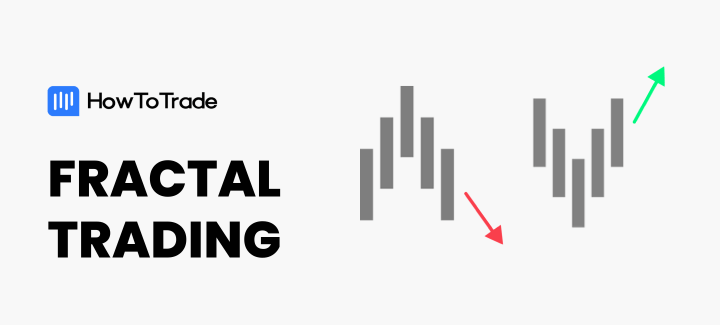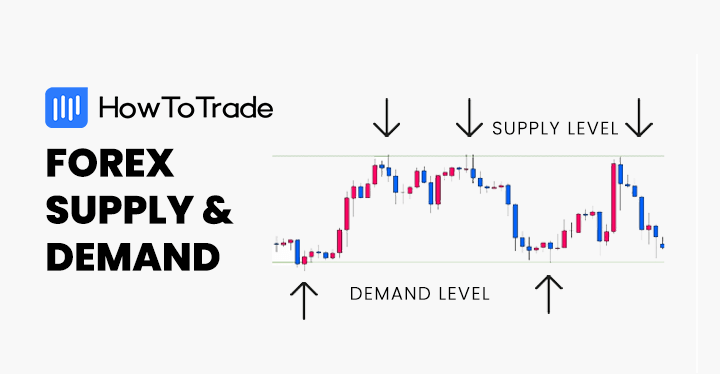
Choosing a time frame is as important as choosing an asset to invest in, which demands careful consideration. Unlike position traders, short-term traders often use multi timeframe analysis to identify market opportunities.
And the big question is, what is the best time frame combination for day trading and scalping?
- Multiple timeframe analysis is a trading technique that involves analyzing an asset’s price in different timeframes.
- This technique is often used by day traders and scalpers, enabling them to spot intraday trends and reversals quickly.
- Specific timeframe combinations are well-suited for short-term trading.
In this article, we will cover all you need to know about choosing the ideal time frame for your trading style, whether you are a day trader or a scalper. Let’s dive right in.
 Table of Contents
Table of Contents
What is a Multiple-Timeframe Analysis?
Multiple time frame analysis is about consulting many timeframes of the same currency pair or other instrument while doing your technical analysis. If you’re looking to trade on the 5-minute timeframe, for instance, multi-timeframe analysis would require you to check the higher time frames before making your entry.
But why would you do this?
The idea behind using multiple time frames is simple. Essentially, trading multiple time frames helps you view the chart from various perspectives, thereby giving you a complete picture of what the market is trying to do. This can be a game-changer in your trading.
For instance, let’s assume you look at a 5-minute chart, and you enter a position with a prediction that a bullish trend is about to begin. All your trading strategy’s confirmation tools are positive, and you’re feeling good about the trade. But as soon as you open a position, the price makes an aggressive move reversal, as if to emphasize how wrong you were, before taking out your stop loss. Then, when you switch to a higher timeframe, let’s say an hourly chart, you notice that the overall trend is entirely different.
Almost every trader has been in this situation. One of the ways to prevent this issue is through a multi-timeframe analysis. This way, you consult a higher timeframe to see what the market is doing in the long run and avoid poor entry prices. Maybe you would also see that that bullish trend you identified on a lower timeframe was only a pullback on a generally bearish trend on a higher timeframe.
In addition, multiple timeframes also allow you to plan your trade. For instance, your analysis can predict that there will be a price retracement in the 4-hour timeframe. So, you know what to expect from the trade and how you intend to manage it. You then dig into the 15-minute chart to scout trade opportunities as soon as the retracement is done. That’s what multi-timeframe analysis can do.
So, all in all, multiple timeframe analysis is a powerful tool for analyzing price behavior, especially for day traders and scalpers.
The Significance of Time Frames in Trading
Without a doubt, timeframes are everything in trading. Especially for those who focus on short-term trading analysis. They dictate the duration a trader observes market price movements, influencing their trading outcomes.
Here are some of the main reasons why timeframe selection is a critical consideration for traders:
- Effect on Trading Strategies: Different timeframes require distinct trading strategies. For instance, day trading and scalping thrive on short-term timeframes, while long-term investors focus on higher time frames. Understanding the interplay between timeframes and strategies is essential for aligning your trading personality with your goals.
- Influence on Decision-Making: Your chosen timeframe can directly impact your decision-making process. Shorter timeframes demand quick, precise decisions, while longer timeframes allow for more thoughtful analysis. Choosing a timeframe without considering its psychological and emotional implications will only lead to failure.
- Alignment with Trading Goals: Your trading goals should drive your choice of timeframes. Are you seeking rapid profits or in it for the long haul? By using a trading plan, defining and matching your objectives with suitable timeframes is a fundamental step in crafting a successful trading plan. For that matter, you should also use a trading journal template to record the time frames used in your analysis.
Short, Medium, and Long Timeframes
To fully understand how vital time frames are to your trading, you must know the three primary categories: short-term, medium-term, and long-term. Typically, most typically trade with three time frames, although some prefer to use even more. Each category has distinct characteristics and is suited to different trading strategies.
- Short-Term Timeframes: Short-term timeframes typically range from 1 minute to 15 minutes, depending on your trading style. Since these traders thrive on rapid price movements and are adept at seizing these opportunities, the short-term timeframe is used majorly for entries.
- Medium-Term Timeframes: Medium-term timeframes are mostly used by swing traders. These can either be the 5-minute (for scalpers) or 15 minutes (for day traders.) Medium-term timeframes are the sweet spot between the long-term timeframe and the short-term ones and often include 30 minutes, 1 hour, and a four-hour chart. They allow for a more comprehensive analysis of market trends and provide us with the current market bias.
- Long-Term Timeframes: Long-term timeframes are used by position traders to determine the market trend. Tracking a trade from these long-term (higher) time frames to lower ones is often called multi-timeframe analysis. The most widely used timeframes for long-term trading include a daily chart, weekly chart, and monthly chart.
Selecting the Right Time Frame Combinations
Now that we’ve seen the importance of choosing the right time frame for your trading style, how do you select the right combination? Several factors should influence this critical decision. Here are the major ones:
- Market Volatility: The level of market volatility can profoundly affect the suitability of timeframe combinations. In highly volatile markets, shorter timeframes may be preferred, while calmer markets warrant longer timeframes. As a result, assessing the current market conditions should precede choosing which timeframe combinations to trade.
- Personal Preferences: Traders have unique trading styles and preferences, and they should respect this fact while selecting their trading timeframe combinations. Some may do well with short timeframes due to their high volatility, while other traders may prefer a more relaxed approach. Aligning one’s time frame choices with one’s personality and trading goals cannot be overemphasized.
- Risk Tolerance: Traders should consider their risk tolerance when selecting timeframe combinations. Shorter time frames often come with higher volatility and more frequent trading, which can increase risk. Longer timeframes may provide a more stable and predictable trading environment but require more patience.
- Flexibility: Flexibility is a crucial aspect of time frame selection. Traders should be willing to adapt to changing market conditions. Being open to switching between different timeframes or adjusting your approach can help you navigate complex market dynamics.
The idea behind using multiple time frames is simple. Essentially, trading multiple time frames helps you view the chart from various perspectives, thereby giving you a complete picture of what the market is trying to do. This can be a game-changer in your trading.
Multiple Timeframe Combinations for Day Traders
There are no rules on specific time frame combinations for day traders, but here’s the question you may ask: What time frame combinations do you recommend for day traders?
Here’s the answer: When it comes to the day trading strategy, precision and agility are paramount. Day traders thrive on short-term price movements, making certain timeframe combinations well-suited to their needs. Let’s examine the timeframe combinations that work best for day traders:
- 5-Minute Charts: The 5-minute chart provides a basic view of price movements, enabling traders to spot intraday trends and reversals quickly. Day traders often use this timeframe to fine-tune entries and exits, making it a valuable tool for executing trades rapidly.
- 15-Minute Charts: The 15-minute chart balances the granularity of the 5-minute chart and a slightly broader perspective of the 1-hour chart. It offers a clearer view of price patterns while allowing quick decision-making. Day traders often use the 15-minute chart to confirm signals from shorter timeframes and to identify broader trends.
- 1-Hour Charts: While day traders primarily focus on shorter timeframes, the one-hour chart can provide valuable context. It helps traders identify key support and resistance levels and overarching market trends. By incorporating 1-hour charts into their analysis, day traders can make more informed decisions about the overall market direction.
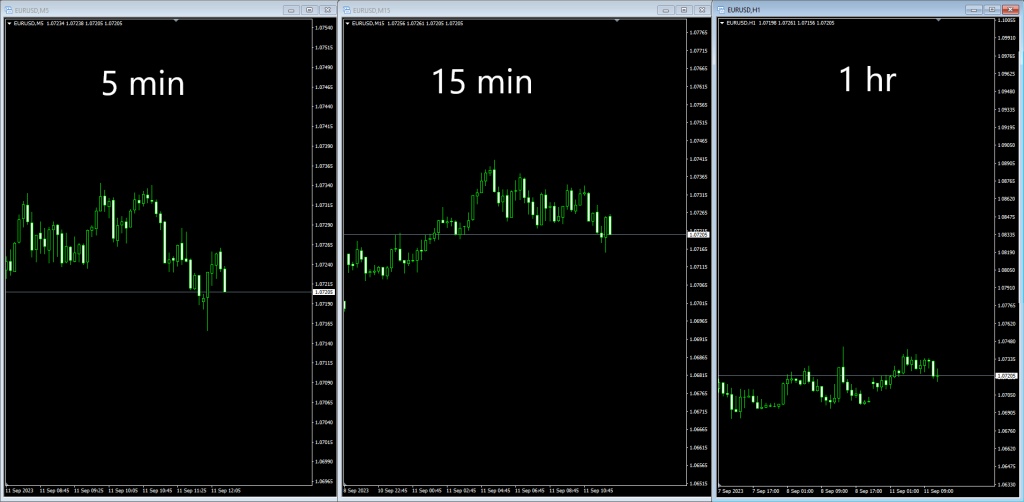
The benefits of these timeframe combinations for day traders are clear: they provide the necessary granularity to spot short-term opportunities while offering information from a broader market perspective. Traders can use the 5-minute and 15-minute charts for entry and exit points, with the 1-hour chart as a trend detection time frame.
Multiple Timeframe Combinations for Scalpers
With the scalping trading strategy, every tick counts. To make a living in this high-speed environment, scalpers predominantly rely on three specific timeframe combinations:
- 1-Minute Charts: The 1-minute chart allows scalpers to capture the minutest price movements, making it ideal for executing rapid trades. Scalpers leverage this timeframe to identify quick opportunities and make lightning-fast entry and exit decisions.
- 5-Minute Charts: The 5-minute chart gives scalpers a slightly broader perspective while preserving essential granularity. It helps confirm signals from the 1-minute chart and spot emerging trends or reversals. Scalpers often use it as a complementary tool to fine-tune their entries and exits.
- 15-Minute Charts: Although less common in scalping, the 15-minute chart can serve as a context source. Scalpers may glance at it to identify dominant support and resistance levels or to gauge the broader market sentiment. However, the 15-minute chart remains a secondary reference in the scalper’s toolkit.

Generally, scalpers gravitate towards these very short timeframes because they offer the quickest insights into price fluctuations. Yet, some scalping traders use an additional higher time frame chart, such as the 1-hour chart, or even a daily chart as another indication for the primary trend. But unlike day and swing traders, they do not monitor a higher time frame chart frequently. Instead, they use it once a day to realize what’s the primary trend of the tradable asset.
How to Combine Multi-Timeframe Analysis with Trading Strategies
Let’s show you what multi-timeframe analysis looks like with common trading strategies, such as support and resistance trading and SMC supply and demand trading.
1. Support and Resistance Trading With Multi-Timeframe Analysis
Often, when the price approaches a support or resistance level, we expect either a breakout or a bounce. The way you would apply Multi-timeframe analysis here is by spotting your support/resistance zones on the higher time frame and seeking out your entries on a lower time frame.
Let’s use the EURUSD chart on the hourly and 5-minute timeframes as our example. Notice that we approach a resistance zone where the price has clearly struggled to break through.
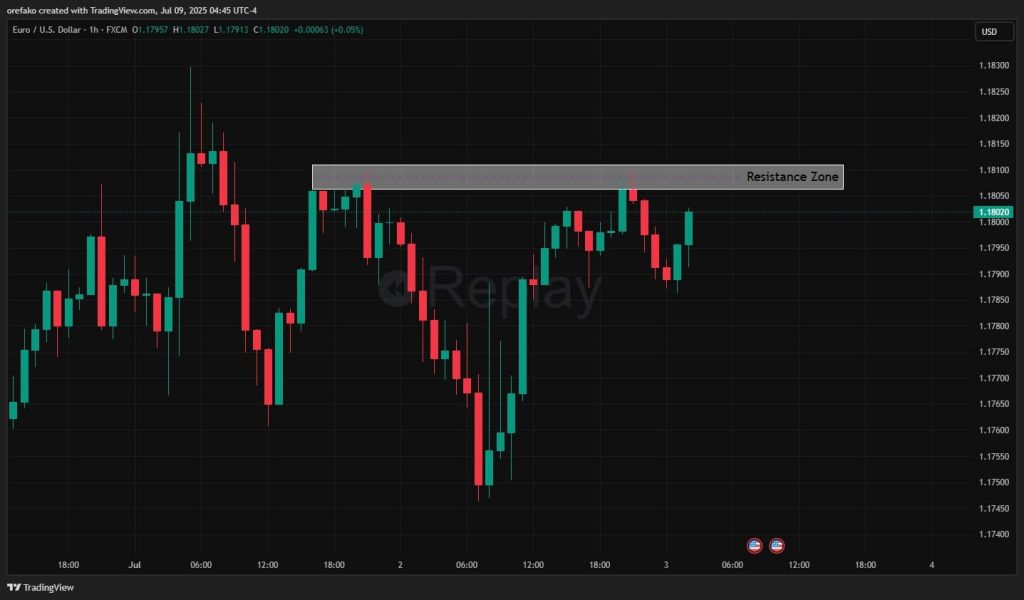
At this point, we’re unsure whether we’ll get a breakout or a bounce, but we’re prepared regardless. Why? Because the 5-minute timeframe provides a clear picture. See how it gives us two bearish engulfing candlesticks. The first one was quite unsure, but the other was a clear sign that the resistance zone would hold once again.
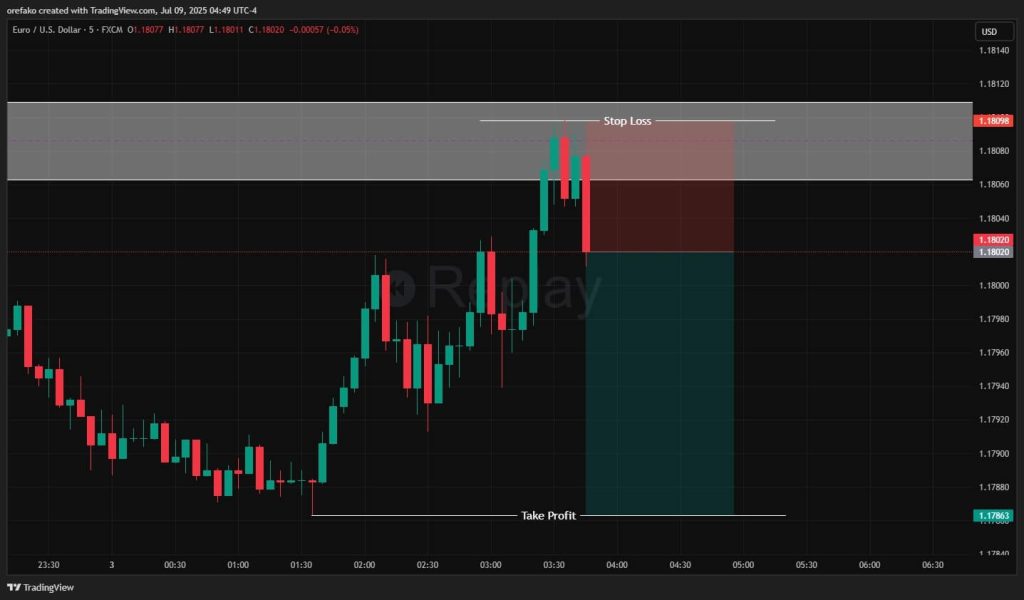
We place our stop loss at the top of the swing point and target the closest swing low. The rest is history.
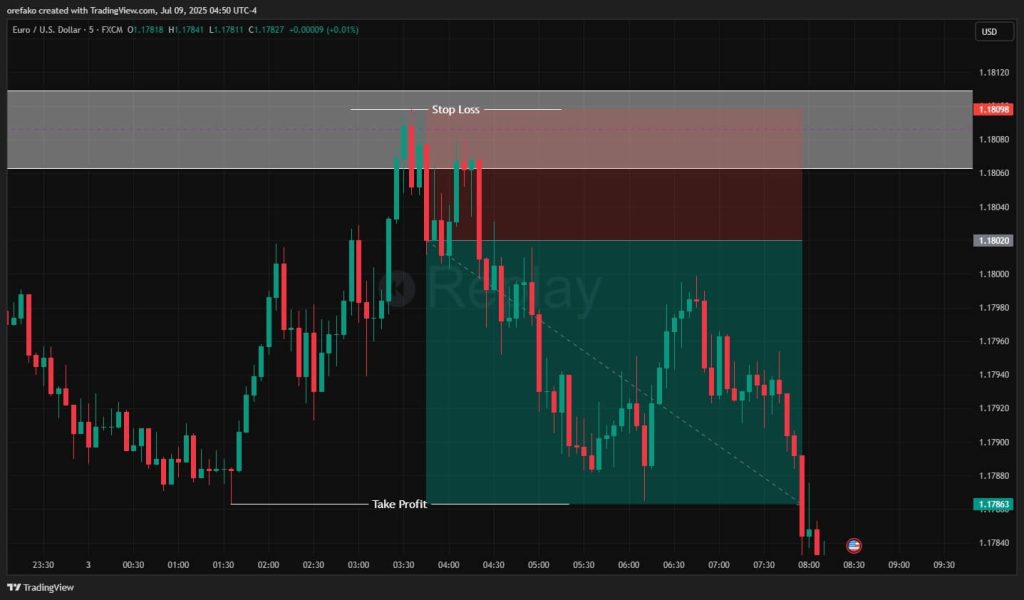
2. SMC Supply and Demand Trading with Multi-Timeframe Analysis
Another good instance where multi-timeframe analysis works well is in Smart Money Concept trading, with concepts such as order blocks and Imbalances (Fair Value Gaps).
Let’s use the GBPUSD chart on the 4-hour, 1-hour, and 15-minute charts as an example. You’ll notice that we’re currently in a bullish trend on the 4-hour chart due to the formation of higher highs and higher lows. We also have the formation of an order block, and we know that if the price is going to continue its bullish trend, it’s likely from that order block.
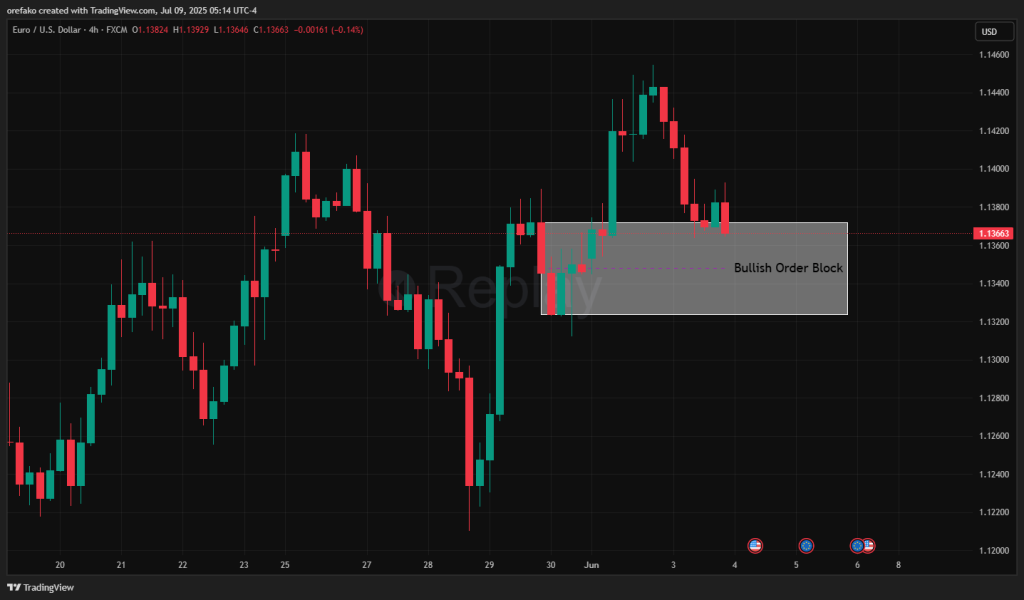
Next, we examine the 1-hour chart to confirm that the price has returned to bullish conditions following the retracement. And there, you’ll also see that the bearish order block, which formed when the price entered the 4-hour bullish order block, has been flipped. And when an order block is flipped, it becomes a breaker block. This is exactly what you want to see to confirm the continuation of the major bullish trend.
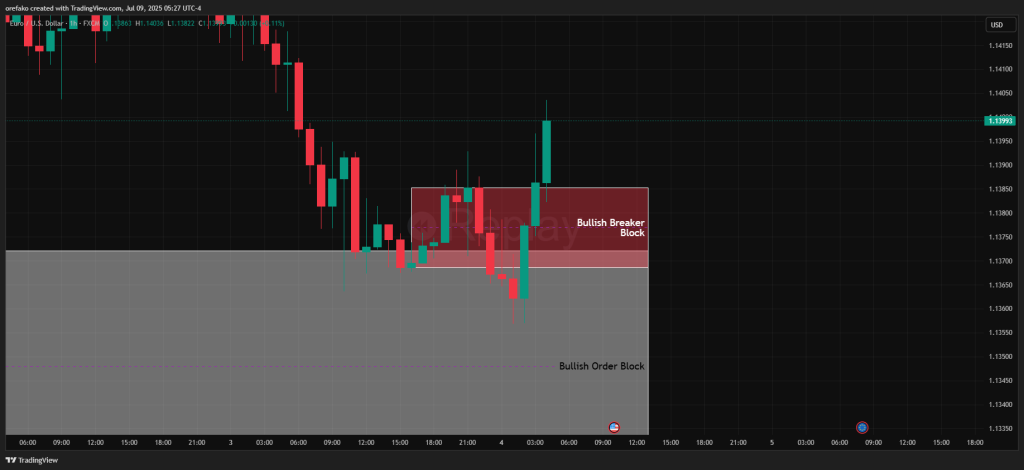
Finally, we drop to the 15-minute timeframe to catch an entry. The best case scenario is to wait for the price to return to your breaker block. If there’s an FVG or 15-minute order block in this 1-hour breaker block, it’s a good entry zone for you.
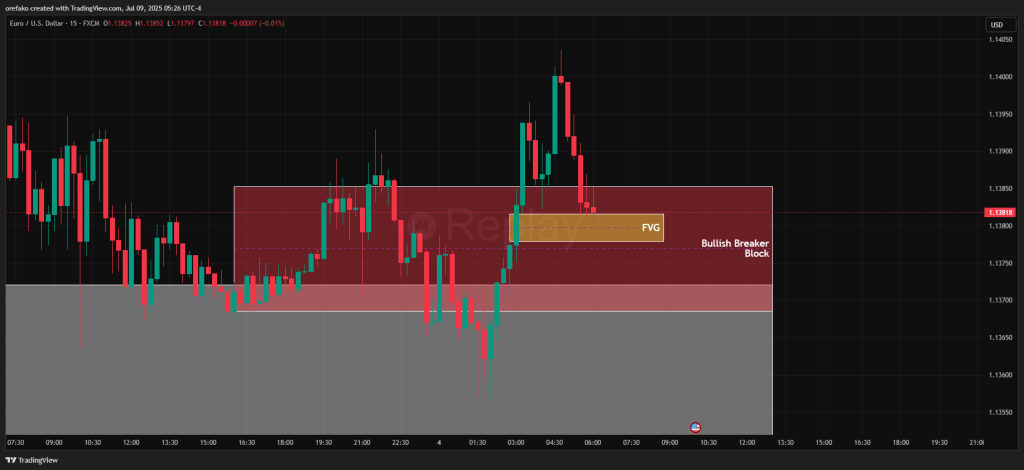
Your stop-loss level falls below the FVG/Order Block if you’re trying to keep your stop-loss tight. While this may guarantee you a great risk-to-reward ratio, you’re susceptible to being swept as part of liquidity. In fact, that is exactly what happens in this instance. To avoid this, we recommend that you place your stop loss below the most recent swing low. In our case, the stop loss is below the swing low. Our profit target is at the most recent high on the 4-hour timeframe. And from there, the rest is history.

Wrapping Up
In sum, being a professional day trader or scalper requires mastering the basics, including your selected time frame combinations.
Of course, it’s a trial and error process, and every trader develops their own set of multiple timeframe systems. Yet, using our own recommended time frame combinations can help you instantly start trading with multiple timeframes. After all, these are the standard timeframes that most day traders and scalpers often use. Hopefully, these combinations will work for you as well.
Risk Disclosure: The information provided in this article is not intended to give financial advice, recommend investments, guarantee profits, or shield you from losses. Our content is only for informational purposes and to help you understand the risks and complexity of these markets by providing objective analysis. Before trading, carefully consider your experience, financial goals, and risk tolerance. Trading involves significant potential for financial loss and isn't suitable for everyone.


